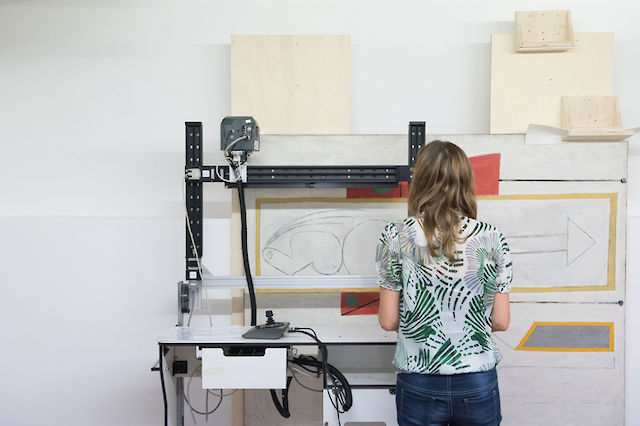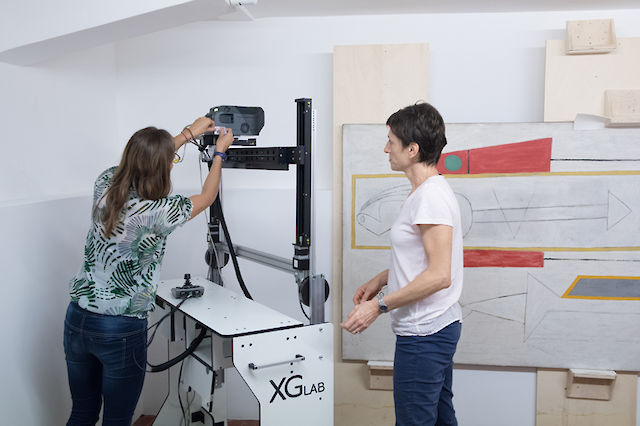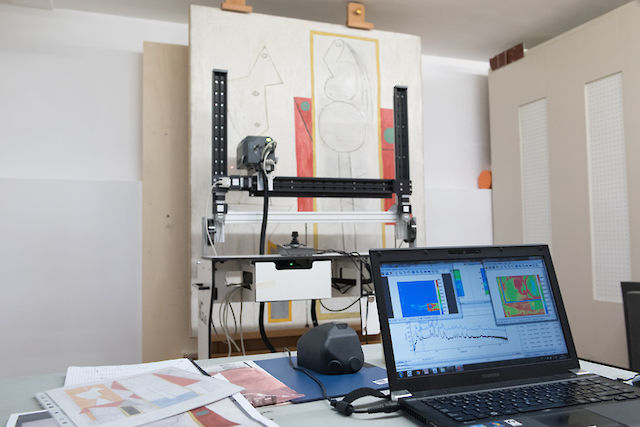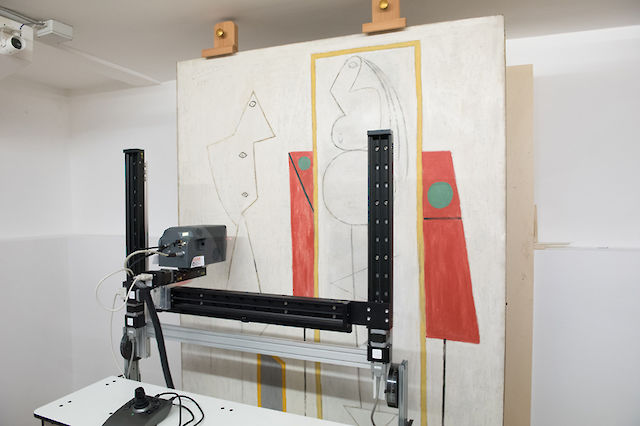Pablo Picasso
The Studio (L’Atelier), 1928
The history of the painting is remarkable. Soon after its completion in 1928, Pablo Picasso reworked it substantially by reducing the chromatic variety and the complexity of the composition. In 1929 he gave it to his dealer, the legendary Daniel H. Kahnweiler, and five years later asked to have it back (in an unusual exchange, he gave five paintings to Kahnweiler in return). At some point the painting passed to Valentine Dudensing, from whom Peggy Guggenheim acquired it in New York in 1942, shortly before the opening of Art of This Century.
At the end of the 1960s, to impede dangerous cracking and flaking, the work was lined with wax and resin and mounted on a honeycomb panel. Over the years the wax has come to the surface, yellowing the areas painted in white, the work's dominant color. In addition, the surface deposit of atmospheric agents has dulled the other colors, resulting in a misleading chromatic perception of the work.
Thanks to scientific progress in the field of conservation, it is now possible to reconstruct the first version of the painting and to determine the sequence of Picasso’s pentimenti. Hence the examinations and subsequent evaluations intended to unveil the creative process underlying The Studio, as well as to determine the most appropriate conservation treatment.
This research and conservation project is supported by EFG, Institutional Patron of the museum.
Preliminary investigations, August 2016
Preliminary investigations were carried out with the technicians of the mobile laboratory, MOLAB of the CNR-ISTM of Perugia, who performed a non-invasive examination of the painting in situ. One of the goals was to understand the composition of the painting that underlies the one visible today—Picasso’s first idea for the image. The responses of the pigments to radiography highlighted in detail the painting underneath, providing an image of the precise distribution of the areas Picasso overpainted.
The week of analytical study and cleaning tests carried out by Luciano Pensabene Buemi, Conservator of the Peggy Guggenheim Collection, in collaboration with Carol Stringari, Deputy Director and Chief Conservator of the Solomon R. Guggenheim Museum in New York, and Veronique Stedman, Chief Conservator of the Centre Pompidou in Paris, were vital in defining the conservation program.
The study and conservation of Picasso’s masterpiece were made possible by the generous support of the BSI bank, Institutional Patron of the Collection. Besides supporting prestigious institutions like the Peggy Guggenheim Collection and its projects, a passion for art is at the core of the BSI’s ethos. Since 2000, BSI has built its own contemporary art collection, which is among the 100 most important corporate art collections in the world.



